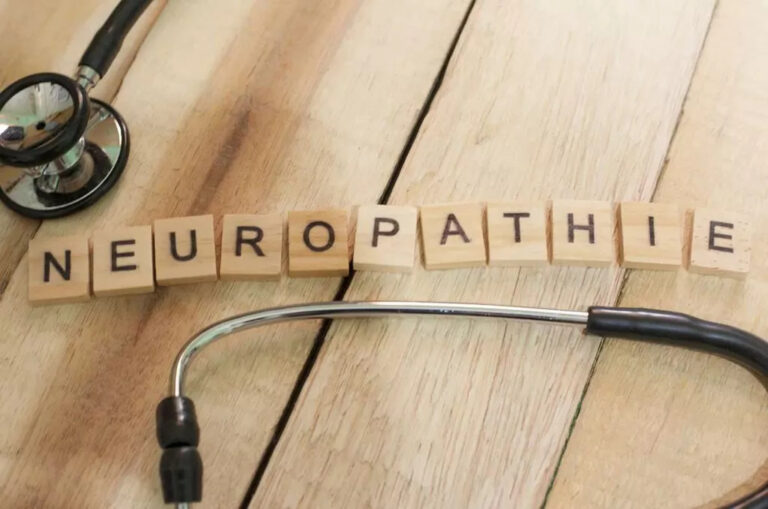
Contents
The answer is because of its progressive nature and the fact that no known cure exists. If you or someone you know is suffering from alcohol addiction, know that it will take time and a lot of effort to recover. However, it is best to start the process of recovery and detoxification as soon as you can. Like other chronic diseases, relapse is possible during the treatment of alcoholism.
Sufficient conditions for effective treatment of substance abusing homeless persons. A second limitation of the Minnesota Model is its exclusive focus on the AA/NA principles and philosophy, which are embraced by many AOD abusers but rejected by others. As a result, for patients who are not willing to follow the AA/NA rules and recommendations, the Minnesota Model is not a viable treatment option. Funding for extended treatment often is inadequate, partly as a result of reductions in treatment duration driven by managed care and other factors. The strong correlation between chronic drug exposure and ΔFosB provides novel opportunities for targeted therapies in addiction , and suggests methods to analyze their efficacy .
When a disease is “progressive,” it means the disease worsens over time. In the case of alcoholism, it means the negative effects of heavy drinking how long does alcohol stay in your system take a progressively larger toll on the user. Like diabetes, along with genetics, environmental factors play a big role in alcohol addiction.
After completing the program, the patient is referred to AA for continuing care. In addition, the patient may participate in outpatient aftercare group therapy sessions to facilitate the transition from the protected inpatient setting back into the “real world” with all its problems and temptations. Although this approach has been effective for many patients, it suffers from two main drawbacks. First, the approach typically has been relatively inflexible, with little room for adapting to a given patient’s characteristics or needs. In recent years, however, treatment programs based on the Minnesota Model have become more flexible, particularly during the continuing-care phase.
Evoke Wellness at Miramar provides cutting-edge, evidence-based forms of treatment, such as alcohol detox, that are proven to keep someone sober and happily alcohol-free. We also rely on safe and effective medications to support their recovery. The long-term effectiveness of this intensive and extensive treatment approach was recently evaluated by McLellan and colleagues , who retrospectively examined the records of 904 physicians managed by 16 State PHPs.

2Controlled studies compare the characteristics of two or more groups of patients receiving different continuing care interventions, with the participants assigned randomly or sequentially to the different groups. As indicated above, one of the major signs and symptoms of alcoholism problems in the implementation of continuing care is retaining patients for the intended duration of the intervention. Several studies have developed and investigated methods to increase both patient involvement/participation and treatment retention.
Meanwhile, many mental illnesses—including depression, anxiety, bipolar, and post-traumatic stress disorder —can contribute to alcoholism. They can even stand as the main reason for a person engaging in addictive behavior. One important feature of this protocol is its adaptability in response to changes in the patient’s risk status. Similarly, the protocol allows counselors to modify the content of intervention even without changing the frequency. For example, if during the risk-assessment phase of the call the patient appears to exhibit symptoms of depression, the counselor could implement specific intervention techniques designed to address this.

The majority believed alcoholism to be a social or psychological problem instead of a disease. The American Society of Addiction Medicine and the American Medical Association both maintain extensive policy regarding alcoholism. The American Psychiatric Association recognizes the existence of alcoholism as the equivalent of alcohol dependence. The American Hospital Association, the American Public Health Association, the National Association of Social Workers, and the American College of Physicians classify alcoholism as a disease. Adoption studies also suggest a strong genetic tendency towards alcoholism.
Environment—Just like growing up in a home where fried foods, soda and sugary sweets increase your risk for heart disease and diabetes, growing up in a home with adults who use drugs increases the risk of addiction. The American Medical Association classified alcoholism as a disease in 1956 and included addiction as a disease in 1987. Once the brain has been affected by a substance to the extent that happens when someone is addicted, sheer willpower will not be sufficient for them to maintain a healthy lifestyle. Many people can quit for a day or a week, even months, but once they start using again, the substance use seems to develop a life of itself. Substance abuse, including alcohol abuse, does not go away without alcohol treatment. Alcohol affects the pleasure, reward, and motivation centers in the human brain.
The smell of pie baking can make you salivate in anticipation of the taste. Addiction fuels habits too—craving a cigarette every morning with coffee or wanting a hit when you drive past the house where you used to do drugs. Medications to make the alcohol withdrawal process safer and easier. When someone first starts drinking, they may experience relaxation, fun, and a sense of well-being.

Rather than abating the symptoms of an existing disorder long-term, AUD usually creates more mental health-related issues as it progresses. As mentioned above, substance use disorder and alcohol use disorder are mental disorders, and therefore alcoholism is among some of the most common chronic conditions in the US. The term alcohol use disorder includes the colloquial term alcoholism and other terms like alcohol abuse, alcohol dependence, and alcohol addiction. Therapy teaches alcoholics to control emotions, cope with stress, make healthy decisions and avoid relapse.
Moreover, many of these molecular changes identified are now directly linked to the structural, physiological and behavioral changes observed following chronic drug exposure . New frontiers of research investigating the molecular roles of ΔFosB have been opened by epigenetic studies, and recent advances have illustrated the role of ΔFosB acting on DNA and histones, truly as a molecular switch . As a consequence of our improved understanding of ΔFosB in addiction, it is possible to evaluate the addictive potential of current medications , as well as use it as a biomarker for assessing the efficacy of therapeutic interventions . Some of these proposed interventions have limitations or are in their infancy . However, it is hoped that some of these preliminary findings may lead to innovative treatments, which are much needed in addiction.
Over the past two decades, research has progressed from identifying ΔFosB induction to investigating its subsequent action . It is likely that ΔFosB research will now progress into a new era – the use of ΔFosB as a biomarker. If ΔFosB detection is indicative of chronic drug exposure , then its monitoring for therapeutic efficacy in interventional studies is a suitable biomarker . Frequency and quantity of alcohol use are not related to the presence of the condition; that is, people can drink a great deal without necessarily being alcoholic, and alcoholics may drink minimally or infrequently. One study found that only 25 percent of physicians believed that alcoholism is a disease.
But, their substance use has also disrupted their prefrontal circuits. With continued use of alcohol or drugs, the nerve cells in the basal ganglia “scale back” their sensitivity to dopamine, reducing alcohol’s ability to produce the same “high” that it once produced. This is called building up a tolerance to alcohol and it causes drinkers to consume larger amounts to feel the same euphoria they once did. One of the difficulties in recognizing alcoholism as a disease is it just plain doesn’t seem like one.
Overall, there were no significant differences in cocaine- or alcohol-related outcomes between the two groups. Further analyses, however, indicated that patients who were still considered alcohol-dependent at the end of IOP benefitted more from relapse prevention, whereas patients whose alcohol dependence was in remission responded equally well to both therapies. Finally, all of the studies focused on patients who had completed the initial stage of treatment before entering continuing care. However, it is especially those patients who do not complete inpatient therapy or IOP who might benefit most from the lower-intensity continuing-care approaches. Thus, it will be important to design continuing care programs that enroll patients early in the initial treatment process in order to retain them in a continuing care program even if they drop out of initial treatment.
Clearly, more effective medications and a better understanding of which patients respond best to which medications are sorely needed in order to expand the role of extended pharmacotherapies in the treatment of alcohol use disorders. Self-help groups such as AA, NA, or Cocaine Anonymous are the most commonly available type of continuing care for people with AOD use disorders, although they should not be considered formal treatment interventions. All of these groups are based on 12-step programs that provide a spiritual and behavioral guide to self-improvement and offer social support for people seeking to achieve abstinence. The composition of regular attendees can vary greatly, and some groups may attract certain subgroups of addicts (e.g., younger people, women, or nonsmokers). Therefore, new members may have to try out several meetings to find a group that is most appropriate for them.
Many of the effects of drinking every day can be reversed through early intervention. Typically, alcohol withdrawal symptoms happen for heavier drinkers. Alcohol withdrawal can begin within hours of ending a drinking session. While cirrhosis scars from excessive drinking are irreversible, quitting alcohol and leading a healthier lifestyle can help your liver heal from alcohol-related liver disease. In 2019, 14.5 million adults had alcohol use disorder, with only 7.9% receiving treatment. The number of drinks you have in a week or at one time could also make you more prone to becoming an alcoholic.
People who binge drink are more likely to have unprotected sex and multiple sex partners. These activities increase the risk of unintended pregnancy and sexually transmitted infections, including HIV. Drinking too much alcohol increases the risk of injuries, including those from motor vehicle crashes, falls, drownings, and burns. It increases the risk of violence, including homicide, suicide, and sexual assault.
One subgroup of AOD-dependent patients that is of particular concern to the public and the medical profession is physicians with AOD use disorders. To maintain their license to practice medicine, these physicians must undergo intensive treatment that is coordinated and strictly monitored by State Physician Health Programs for several years. The patients must maintain abstinence from AODs, are subject to random drug tests to document abstinence, and must adhere to a long-term treatment plan. Any relapses to AOD use or noncompliance with other treatment conditions leads to prompt re-intervention by the PHPs, with the level of the intervention depending on the severity of the relapse/noncompliance (Dupont et al. 2009). The American Medical Association first identified alcoholism as a disease in 1956.
The brain’s reward system activates when we do something we like—eating a piece of our favorite pie, hanging out with friends, or going for a run, for instance. Drugs and alcohol hack into your brain’s communication system and interfere with how nerve cells send, receive and process information. The moody, angry dropout who survived overdoses to get caught breaking into cars wasn’t the boy she raised. What she knew, like the families and friends of the more than 15,000 Hoosiers who’ve died due to overdose since 1999, is that addiction’s not a life anyone would choose. It’s clear that the scope of the potential consequences is enormous, but chances are, that’s not new information for you. If you’ve been watching a loved one slip away from alcohol problems or addiction, you are likely all too familiar with some of these consequences.
If you are experiencing the negative effects of alcoholism, or someone you love needs help with their alcoholism, we are here to help. The Retreat of Atlanta understands the heartache and desperation involved with alcoholism. We offer professional treatment teams who are familiar with alcohol use disorder and can design a comprehensive detox and treatment plan that is right for you. According to The American Psychiatric Association, alcoholism is a disease. In fact, the modern disease theory of alcoholism states that problem drinking is sometimes caused by a disease of the brain, characterized by altered brain structure and function.
These rats preferred drinking alcohol over other liquids, resulting in a tolerance for alcohol and exhibited a physical dependency on alcohol. Rats that were not bred for this preference did not have these traits. Upon analyzing the brains of these two strains of rats, it was discovered that there were alcoholics anonymous differences in chemical composition of certain areas of the brain. This study suggests that certain brain mechanisms are more genetically prone to alcoholism. Twin studies, adoption studies, and artificial selection studies have shown that a person’s genes can predispose them to developing alcoholism.